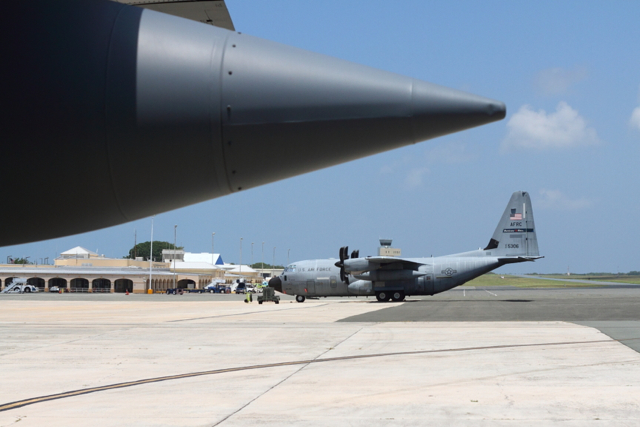
He tells them to take the mission seriously. Storms can intensify quickly, he says, which is something everyone in the room should know because they’ve seen it happen before.
“Wilma was supposed to be nothing,” McLuen reminds his crew. “Expect the unexpected.”
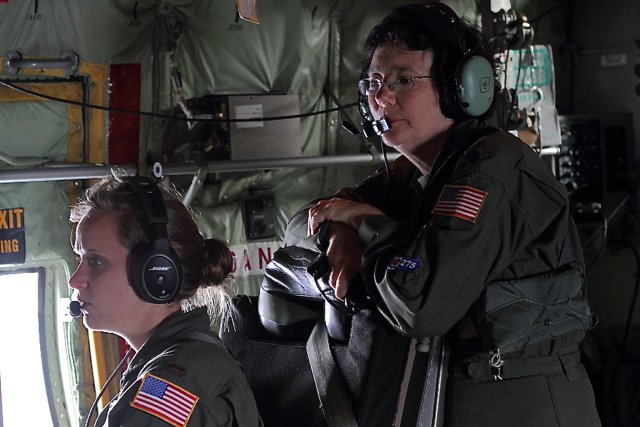
Every year the Hurricane Hunters establish a forward operating base at the Henry E. Rohlsen airport and elements of the unit deploy to St. Croix to keep an eye on nascent storms blowing across the ocean from off the coast of Africa.
The unit offered The Source a seat on one of their recent missions to give us a peek into the sometimes dangerous, sometimes tedious world of hurricane hunting.
The Hurricane Hunters fly into the hearts of storms in WC-130J aircraft—customized versions of the propeller driven C-130 cargo plane that has been the workhorse of the Air Force since the 1950s. The interior is more spacious than you might expect. Aside from the cramped flight deck, the fuselage is a long, mostly empty tube. A pair of computer stations sits towards the front, but behind them there is very little, save for a long line of folding chairs running down the walls and in a thin middle row that bisects the cabin. The floor is studded at regular intervals with cargo hooks to tie down whatever extra equipment is needed for the mission, which today isn’t much.
The engines start and the cargo plane lumbers off the ground. McLuen, who is piloting, makes a steep turn over St. Croix and sets the plane on a course towards Puerto Rico where Dorian is churning the waters off its northern shore.
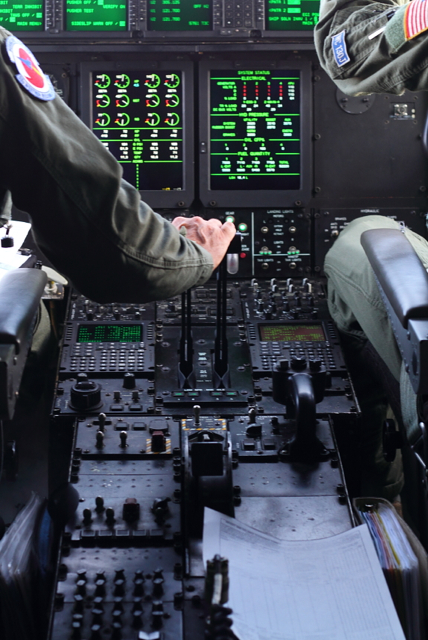
I ask why, since the storm is so weakened, it is important to run a mission like this and McLuen matter-of-factly replies, “Because the Hurricane Center thinks it’s important.”
While the Hurricane Hunters are members of the Air Force Reserves, they get most of their marching orders from the National Hurricane Center in Miami, a unit of the National Oceanographic and Atmospheric Administration. The Hurricane Hunters have made a commitment to NOAA to fly up to three storms at a time, 24-hours a day as needed.
The unit’s mission is very straightforward. Lt. Col. Valerie Hendry, a veteran of 26 hurricane seasons, explains to me that the unit’s job is to collect frontline data that makes the computer models at the National Hurricane Center more accurate, anywhere from 15 to 30 percent depending on who you ask.
This narrows the “cone of uncertainty” we’ve all seen on weather reports, the bright red projection on the map that shows all of the possible trajectories the storm may take.
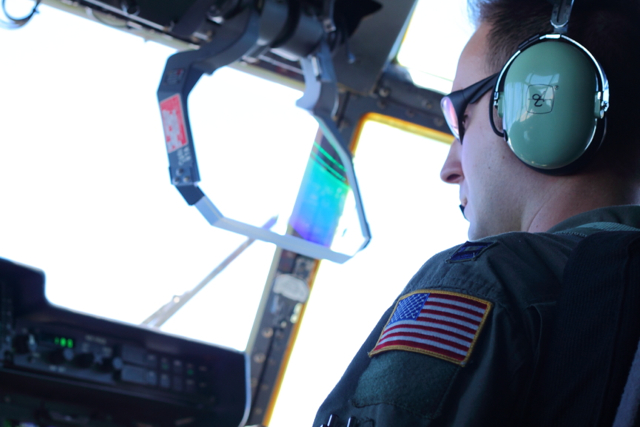
“You can imagine the cost of evacuating Key West if you didn’t need to,” he said. “We’re a lifeline for them.”
As the plane reaches the storm, the bright sunlight streaming through the windows darkens to a muted gray. Outside there is little to see. You may be familiar with some of the majestic photos taken by Hurricane Hunters of the eye walls of larger storms – great curving mountains of clouds that climb miles into the sky – but Dorian doesn’t offer anything so dramatic. The view from the window is drab. Formless storm clouds meet the heaving ocean in a thick band of mist that obscures the horizon.
The Hurricane Hunters turn to their work. Hendry is the chief weather officer on the flight, but she takes a back seat to her apprentice, 2nd Lt. Leesa Froelich. This is Froelich’s first storm and, while she has a background in meteorological science, she is as new as I am to the bumps and shocks of working inside a storm-rocked plane.
I’m told that being a Hurricane Hunter is rarely a short-term job. The assignment draws a special breed of scientist-soldiers who, once they land a spot in the unit, cling to it for years. Froelich tells me she joined the Air Force Reserves specifically to become a Hurricane Hunter, and while the steady turbulence puts my stomach on edge, she seems perfectly content to do the work in front of her.
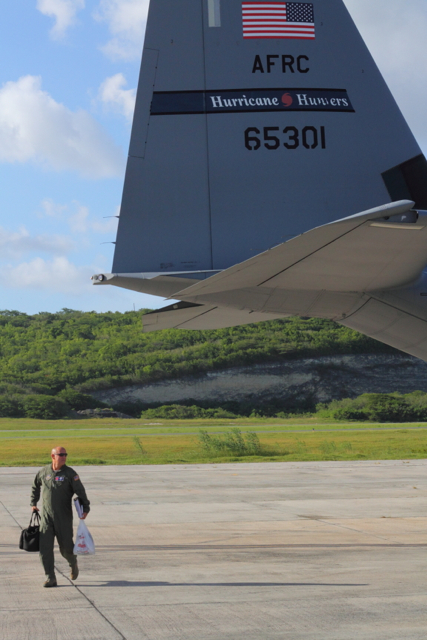
Hendry explains that while we know water temperature can have a major impact on how quickly a storm strengthens, there hasn’t been much research done to map how deep hot water runs in different areas of the Caribbean during hurricane season. She says the experiment could produce more accurate weather models in the future and will be, at the very least, “a gold mine for graduate research.”
Several hours into the trip, the work begins to slow down. Bags of snacks appear and some of the crew with nothing left to do spread out on the folding seats and take a nap.
Later I’m told this isn’t the norm when working a larger storm. Harrold tells me about a time they were caught in a powerful hurricane south of Hispaniola and the winds interacting with the mountains caused a turbulence so strong it felt “like being shaken up in a coffee can.” No one slept on that trip, he assures me.
Still, it’s worth noting how much of their time is spent in transit—some storms can take up to six hours just to reach, I’m told—and it’s clear that for many members of the crew the bucking WC-130J offers the comfort of a second home as they’re tasked with the classic military order to “hurry up and wait.”
They don’t have to wait too long today. The mission, originally slated for 9 hours, is called off halfway through. Dorian has proven to be just as uneventful as they projected and there is no sign of an eye.
Back on the ground, the debriefing is short. Most of the crewmembers head for their hotels to rest for their next mission, but a few stick around to talk about why they do this kind of work.
They all agree that there is a clear sense of purpose to what they do. No one else flies this type of mission, and the data they collect impacts the lives of millions, not just in the United States, but throughout the Caribbean. There is no question that they are working for the common good, a reward that is rare in any line of work.
“I’ve flown a lot of missions,” Harrold says. “And this is a good mission to fly.”





